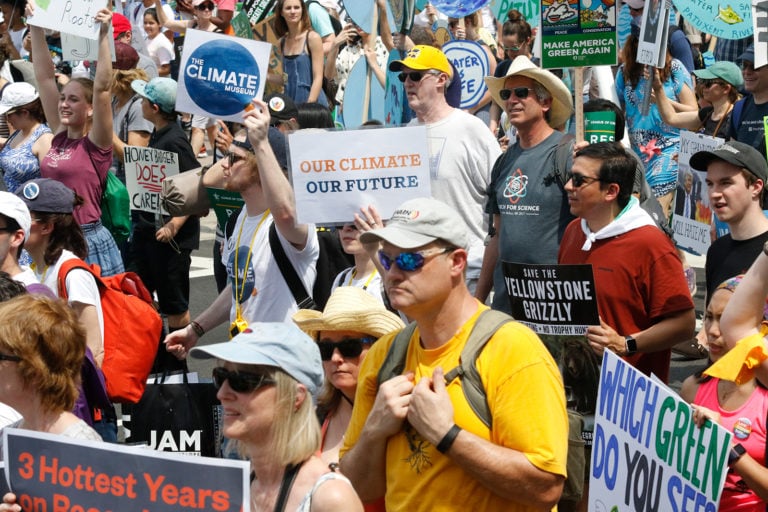Pick from a pair of floating Georgia Rivers Alive cleanups for Earth Day, and bring your boat!
Gretchen Quarterman will lead a floating cleanup on Joree Millpond in Valdosta, Georgia,
starting at 913 Millpond Road (PDF flyer for Joree Millpond).
You can return whenever you want to, but we expect this boating cleanup
to last about two hours.
If you have a jon boat and are willing to take a volunteer onto the pond to remove litter, please contact either Gretchen Quarterman (229-834-1945) or Austin Fiveash (229-563-6262).
You can also participate in your kayak or canoe.
Volunteers will remove litter from along the edge of the pond and from near the spillway.
The City of Valdosta is providing a large trash receptacle at the site,
thanks to Valdosta Stormwater Manager Angela Bray.
Bobby McKenzie will lead a paddle cleanup from Sugar Creek behind the Salty Snapper off of Gornto Road,
down the Withlacoochee River, and a short hop up the Little River to Troupville Boat Ramp.
That’s less than 4 river miles, and even with stops for trash collection should take less than three hours.
We will leave the bagged trash at that destination, where Lowndes County Public Works will pick it up Monday.
When:
Gather 9 AM, launch 9:30 AM, end 12:30 PM, Saturday, April 17, 2021
Millpond put in:
913 Millpond Road, Valdosta, GA, Take Country Club Drive to Mill Pond Road. Turn right and 913 is last house on left before right-only exit onto Jerry Jones Road.
Drop your boat at the water, then park near the street.
Millpond GPS: 30.867375, -83.309558
River paddle put in:
The Salty Snapper parking lot, 1405 Gornto Road, Valdosta, GA.
Go to the back of the parking lot to drop off your boat at Sugar Creek.
Sugar Creek GPS:
30.861785, -83.318793
River Paddle Take Out:
Troupville Boat Ramp,
9664 Valdosta Hwy, Valdosta, GA 31602.
Go west on St. Augustine Road across I-75 (exit 18) and cross the Withlacoochee River.
At the light for Val Tech Road, turn left, which takes you down to the boat ramp.
Troupville Boat Ramp GPS:
30.851842, -83.346536.
Safety:
All volunteers must sign a WWALS liability release, which makes WWALS insurance cover them, and must wear a life jacket at all times while in boats.
Bring: the usual personal flotation device, boat, paddles, snaks, drinking water, warm clothes, and first aid kit.
Also trash pickers and trash bags, and good boots.
Free: This outing is free to everyone, because it is a cleanup.
We recommend you support the work of WWALS by
becoming a WWALS member today!
https://wwals.net/donations/#join
Event:
facebook, meetup
![[Joree Millpond, trash, Withlacoochee River]](https://www.wwals.net/pictures/2021-04-17--cleanup-joree-millpond-sugar-creek-withlacoochee-river-troupville-boat-ramp/many.jpg)
Joree Millpond, trash, Withlacoochee River
Photos:
Russell Allen McBride.
Continue reading →
![[Strip mine discussion and location]](https://www.wwals.net/pictures/2021-10-19--scott-james-radio/minemany.jpg)

![[Restore WOTUS, mine too near Okefenokee Swamp, groundwater recharge]](https://www.wwals.net/pictures/2021-09-03--wka-comments-epa-wotus/many.jpg)
![[Great Blue Heron flying, Suwannee River, Okefenokee Swamp, 2019-12-07]](https://www.wwals.net/pictures/2020-11-17--gwc-dd/2019-12-07--jsq-gbh-suwannee-river-okefenokee-with-boaters.jpg)
![[Multiple Streams and Wetlands, including Wetlands Intersecting Streams]](https://www.wwals.net/pictures/2021-09-03--wka-comments-epa-wotus/big/Attachments-Volume-5--Exs.-11-14-0011.jpg)
![[Joree Millpond, trash, Withlacoochee River]](https://www.wwals.net/pictures/2021-04-17--cleanup-joree-millpond-sugar-creek-withlacoochee-river-troupville-boat-ramp/many.jpg)


![[EPA announcement over WKFL opposition, our rivers left out]](https://www.wwals.net/pictures/2020-12-17--epa-fdep-cwa-404/many.jpg)
![[Great Blue Heron, Suwannee River, Okefenokee Swamp, TPM mine site]](https://www.wwals.net/pictures/2020-11-17--gwc-dd/many.jpg)
![[TPM mine site with ONWR on left]](https://www.wwals.net/pictures/2020-11-06--tpm-drone/tpm-site-onwr-left.jpg)
![[Opposition and Addendum Letters]](https://www.wwals.net/pictures/2020-11-02--wkfl-epa-fdep-404-assumption/letters.jpg)
![[44,000 commenters against strip mine on a map]](https://www.wwals.net/pictures/2019-07-12--tpm-usace/Location-of-34-014-of-over-44-000-Commenters-on-Twin-Pines-March-2020-Application-by-State.jpg)